- News
- Reviews
- Bikes
- Components
- Bar tape & grips
- Bottom brackets
- Brake & gear cables
- Brake & STI levers
- Brake pads & spares
- Brakes
- Cassettes & freewheels
- Chains
- Chainsets & chainrings
- Derailleurs - front
- Derailleurs - rear
- Forks
- Gear levers & shifters
- Groupsets
- Handlebars & extensions
- Headsets
- Hubs
- Inner tubes
- Pedals
- Quick releases & skewers
- Saddles
- Seatposts
- Stems
- Wheels
- Tyres
- Tubeless valves
- Accessories
- Accessories - misc
- Computer mounts
- Bags
- Bar ends
- Bike bags & cases
- Bottle cages
- Bottles
- Cameras
- Car racks
- Child seats
- Computers
- Glasses
- GPS units
- Helmets
- Lights - front
- Lights - rear
- Lights - sets
- Locks
- Mirrors
- Mudguards
- Racks
- Pumps & CO2 inflators
- Puncture kits
- Reflectives
- Smart watches
- Stands and racks
- Trailers
- Clothing
- Health, fitness and nutrition
- Tools and workshop
- Miscellaneous
- Buyers Guides
- Features
- Forum
- Recommends
- Podcast
review
£1,299.99
VERDICT:
Not the quickest or the lightest, but a solid bike for far-flung adventures – or just riding to work
Weight:
10,870g
Contact:
At road.cc every product is thoroughly tested for as long as it takes to get a proper insight into how well it works. Our reviewers are experienced cyclists that we trust to be objective. While we strive to ensure that opinions expressed are backed up by facts, reviews are by their nature an informed opinion, not a definitive verdict. We don't intentionally try to break anything (except locks) but we do try to look for weak points in any design. The overall score is not just an average of the other scores: it reflects both a product's function and value – with value determined by how a product compares with items of similar spec, quality, and price.
What the road.cc scores meanGood scores are more common than bad, because fortunately good products are more common than bad.
- Exceptional
- Excellent
- Very Good
- Good
- Quite good
- Average
- Not so good
- Poor
- Bad
- Appalling
Steel has long been the preserve of the adventure/touring rider so it's no surprise to see Vitus embrace the material for its Substance bikes, the latest addition to the range. Don't go thinking it's an exercise in nostalgia though: with hydraulic disc brakes, 1x groupset and full-carbon fork, this Substance V2 Apex holds plenty of appeal for the modern day on/off-roader.
- Pros: Large tyre clearance, wide gear range, stable handling
- Cons: Quite heavy, pricier than the competition
There are lighter and quicker bikes out there to take on the gravel, but if comfort and stability are what you're after then the Substance will make a loyal companion.
The ride
Tyre choice has a much bigger influence on how a multi-terrain bike rides than something designed just for tarmac, and the Vitus's ability to run both wide 650B rubber alongside skinnier 700C road models is probably one of its best attributes.
In this V2 Apex guise, our test model is fitted with the smaller diameter wheels as standard, wrapped in 47mm-wide WTB Byway tyres. In everything but wet or sticky mud, these cope with anything you throw them at, but more importantly than that, they bring a lot of comfort to the mix.
The 4130 chromoly tubes used in the Substance's construction are double butted, but you don't get much of that smooth, vibration-damping 'steel feel' coming through; it's actually quite a firm frame. This isn't as noticeable on the road, but off-road on the gravel it can become quite jarring until you find a sweetspot in the tyre pressure.
At about 35psi the WTBs weren't too spongy, allowing for decent rolling resistance on the tarmac, while on the rough stuff they'd take the sting out of rocks, tree roots and potholes. Their width also lets you float over pea-sized gravel and soft mud much better than, say, a 35mm cyclo-cross tyre.
Their surefootedness on various terrain complements the geometry of the Vitus too. With a wheelbase of 1,024mm, stack height of 567.5mm and a slack 71.5-degree head angle, this 54cm model is very stable indeed, especially off-road.
The handling is pretty neutral; there is nothing quick or twitchy about it, which makes it perfect for the new rider or when riding in tricky situations and poor weather. Even when the bike slides out on wet mud it's so easy to control and keep upright, which is a real confidence-booster, especially if the bike is loaded up for adventure (you do have rack mounts after all).
This neutrality does mean that if you're after a bike that's a blast in the bends you'll be disappointed, as the Vitus doesn't really do high-speed handling. The feedback from the front end isn't that descriptive, so if you do let it all hang out on the descent you really have to concentrate to get through the corner on the smoothest line.
In all honesty that's not what the Substance is about, though. Everything about it is aimed squarely at the tourer and cruiser rather than a point-and-shoot cyclo-cross-derived gravel bike.
At first I put this solely down to its weight. It's no porker for this style of machine, but it is in the upper limit. The more I rode the Substance, though, other little things started to become noticeable. The frame doesn't feel that responsive to your input, so you don't get a huge sensation of speed or acceleration even if you are achieving it. It almost seems lethargic at times, plus if you are on the road the wide-ranging cassette has some gaps where you can find yourself either spinning at too high a cadence or churning it over.
Some bikes just don't seem to like being ridden hard. Once I'd learned to appreciate this, and rode the Substance with a lot less aggression and effort than I tend to, like on the recently tested Merida Silex 9000, we became much better friends.
Frame and fork
The frame itself looks to be well finished and the paintwork is certainly up to the job of off-road duties – I didn't notice any damage from stones being flicked against the down tube.
The tubes are double butted, which is a nice touch as a lot frames at this price can be plain gauge. While it doesn't bring a whole lot to the comfort stakes, I've ridden worse – Wilier's Jaroon springs to mind. The Vitus offers a little more relief and feedback.
The tubes are slim; you don't really get any oversizing at all except for the head tube, which is tapered from 1 1/8in at the top to 1 1/2in at the bottom.
Stiffness feels pretty good throughout – certainly for the amount of power you're likely to be putting out to suit the style of riding.
As well as a couple of water bottle mounting points you get bolts for mudguards and a rack.
All cable routing has been kept external, even on the fork, but Vitus has designed it to be tidy and it's barely noticeable.
One thing you might find odd for a bike of this type is the inclusion of a press-fit bottom bracket rather than external threaded bearing cups. We've seen a lot of manufacturers move away from this because of water ingress and creaking issues, so it's at odds with the type of riding the Substance is likely to see.
Vitus told us, "Press-fit was selected because it will allow the rider to run the bike as a single speed when using an eccentric bottom bracket making the bike more versatile." An eccentric bottom bracket uses a two-piece design, where sealed bearings are offset from the bottom bracket centre. Thus, rotating it in the frame allows you to tweak the geometry of a bike, so in this example, reducing the effective length of the chainstays.
To be fair, the Substance has seen a lot of water, mud and grit, and things aren't creaking yet.
While the V1 version of the Substance (Sora-equipped for £699.99, or Tiagra-equipped for £799.99) has a steel fork, the V2 has a full-carbon job with tapered steerer. It feels perfectly stiff enough under heavy braking, especially once the rotor and pads have bedded in. There was a bit of vibration to begin with, something I've seen on a few test bikes. It can be disconcerting at first, but a good wet ride settles everything down.
Clearance is pretty decent too. I reckon you could squeeze in a set of 2in knobblies front and rear should you fancy it, although it would be close. Both the frame and fork also use 12mm thru-axles, which is good to see.
1x groupset
The SRAM Apex 1x groupset uses a 40-tooth chainring with an 11-speed 10-42-tooth cassette, so you get a decent spread of gears. Bottom gear is roughly 25in (about 3in smaller than a 34x32 found on a typical compact double setup), so I could stay seated on the majority of climbs and just tap things out.
If you are just doing road stuff then the cassette can feel a little gappy at times as I mentioned earlier, with bigger jumps between the sprockets than you might be used to, but for all-terrain use I'd say the 1x definitely has its advantages and it certainly suits a bike like the Substance. If you don't want to go for a single chainring, Vitus does offer a Shimano 105 option for the same money.
The Substance has a pretty decent spec list for the money. Although in the early days I wasn't a massive fan of SRAM's DoubleTap shifter setup, I've grown to enjoy using it, and I find it much more comfortable on the hoods than Shimano's 105 hydraulic levers.
The clutch-operated rear mech gives a crisp shift even under load, and you certainly won't have any issues with the chain coming off the single chainring because of rough terrain.
SRAM's hydraulic disc brakes are a great addition too. I find them a little bit more on/off than the more progressive Shimano versions, but for all-out controllable stopping power they are awesome. Vitus has gone for 160mm rotors front and rear, which is more than enough, but should you intend to load up the Substance for a bit of adventure you'll be pleased to have plenty in reserve.
Wheels and tyres
Wheel-wise, the Vitus comes with WTB Frequency Race i23 rims and Alex hubs in a 32-hole combination: a strong set of wheels. They aren't the lightest around, but offer a good combination of weight and strength, staying true throughout the test period – and I certainly wasn't kind to them.
It's been wet too, very wet in fact, and there have been no grumblings from any of the bearings.
I've already mentioned the tyres, and I'd reiterate that they are a good choice for everything except mud or somewhere you'll actually need tread. They are completely slick in the middle but I found them fine on hardpacked mud and wet grass so in the summer they should cover most things. Punctures weren't an issue either.
Finishing kit
Vitus provides everything else. The in-house branded generic alloy stem, handlebar, seatpost and even saddle all offer decent bang for buck in terms of stiffness and comfort.
The bar has a shallow drop and is flared at the bottom, which allows for a bit of extra control when you're riding off-road.
Value
The Vitus is up against some tough opposition including two bikes we've recently tested. The Pinnacle Arkrose 3 scored well. It's an aluminium alloy framed gravel/adventure bike with similar tyre clearances and weight for £1,250. It sounds pretty similar to the Vitus in a lot of respects.
Another challenger could be the Sonder Camino, which uses the same groupset and near-identical build to the Substance, although again it uses an alloy frame, and will set you back £1,050.
> Buyer's Guide: 18 of the best 2018 gravel & adventure bikes
I wouldn't say the steel frame of the Substance gives you any comfort advantage over those alloy models, which is the usual reason to go for the ferrous metal, so the choice comes down to personal preference.
Also worth bearing in mind is that the Substance is £200 more expensive than Vitus's own excellent Energie CX bike, with the only real visible difference in the spec being an alloy frame versus steel.
Conclusion
I had some great rides on the Substance, especially on gravel tracks. Other bikes I've enjoyed because of the blast, the way they skip around on the loose stones or if I darted into the woods, how much of a giggle it was to carve my way through the trees, but the Vitus taught me something different. I could cruise for miles, taking in the scenery and really looking around at my surroundings, because you don't need to focus on the terrain so much.
The geometry of the Substance lets you sit in an excellent position for control and comfort without feeling like you're too upright. You can use the drops to get out of the wind if you want, without the bike becoming nervous.
It's not just off the beaten track that the Vitus works, either. These mild manners make for a great commuter, especially if you hop between canal paths and the roads, for instance. I could also imagine it coming into its own on a long trek across a county, country or continent. If this sounds like the sort of ride you're after, it's well worth considering.
Verdict
Not the quickest or the lightest, but a solid bike for far-flung adventures – or just riding to work
road.cc test report
Make and model: Vitus Substance V2 Apex1
Size tested: 55cm
About the bike
State the frame and fork material and method of construction. List the components used to build up the bike.
From Vitus:
Frame 4130 Cro-moly double butted
Forks Carbon
Shock N/A
Chainset SRAM Apex 1X
Bottom Bracket SRAM
Shifters SRAM Apex 1X
Front Derailleur N/A
Rear Derailleur SRAM Apex 1X 11 speed
Cassette SRAM XG-1150
Chain SRAM PC-1110
Rims WTB Frequency race i23
Front Hub ALEX
Rear Hub ALEX
Spokes Double butted
Tyres WTB byway
Front Brake SRAM Apex Hydraulic
Rear Brake SRAM Apex Hydraulic
Handlebars Vitus alloy gravel
Stem Vitus alloy
Headset FSA
Saddle Vitus
Seatpost Vitus alloy
Seatclamp Vitus alloy
Tell us what the bike is for
Vitus says, "Whether you're looking for adventure, expanding your riding possibilities, or just want to take the most direct route to work, the Vitus Substance has you covered. The Substance is the bike that will go anywhere you point it, on whatever road surface you choose.
"Choose from the V1 with its 700c wheels, 38c tyres, direct mount brakes and Hi-Ten steel fork. Or V2 with 650b wheels, 47c tyres, flat mount brakes, tapered steer tube and full carbon fork.
"With both bikes capable of running either 700c and 650b wheels & tyres, the possibilities are endless. The Substance offers a new way to ride.
"With 4130 chromoly tubing the Substance is born tough. With mounts for racks and mud guards its also born capable of the biggest bike packing adventures."
Frame and fork
Overall rating for frame and fork
7/10
Tell us about the build quality and finish of the frame and fork?
The overall build quality looks to be good, plus the paint is tough and durable.
Tell us about the materials used in the frame and fork?
The frame is made from 4130 chromoly, a steel alloy, while this model of Substance has a full-carbon fork.
Tell us about the geometry of the frame and fork?
The geometry is pretty typical of what we are seeing on a lot of gravel and adventure bikes: slackish head angle compared with a road machine, and a reasonably tall front end.
You can see the full geometry table here: http://vitusbikes.com/products/substance-v2-apex-2018/#geometry
How was the bike in terms of height and reach? How did it compare to other bikes of the same stated size?
You can see the stack and reach figures for each size in the table linked above, but the Substance has very similar measurements to both the Sonder and Pinnacle mentioned in the review.
Riding the bike
Was the bike comfortable to ride? Tell us how you felt about the ride quality.
The tyres help out quite a lot in terms of comfort as the frame is quite firm for one made of steel.
Did the bike feel stiff in the right places? Did any part of the bike feel too stiff or too flexible?
Stiffness levels are fine for what the Substance is designed to do.
How did the bike transfer power? Did it feel efficient?
There is some frame flex at the bottom bracket if you really stamp on the pedals, but that's not what the Vitus is about.
Was there any toe-clip overlap with the front wheel? If so
No, none.
How would you describe the steering? Was it lively Completely neutral.
Tell us some more about the handling. How did the bike feel overall? Did it do particular things well or badly?
The Vitus is very easy to ride on and off-road because of the stable handling.
Which components had the most effect (good or bad) on the bike's comfort? would you recommend any changes?
Definitely the tyres (good); the saddle is pretty comfortable too.
Which components had the most effect (good or bad) on the bike's stiffness? would you recommend any changes?
The handlebar and stem are quite stiff, so for rocky adventures maybe go for some thicker bar tape.
Which components had the most effect (good or bad) on the bike's efficiency? would you recommend any changes?
The lowest gear on the 1x cassette allows you to stay seated and efficient when climbing hills.
Rate the bike for efficiency of power transfer:
7/10
Rate the bike for acceleration:
7/10
Rate the bike for sprinting:
6/10
Rate the bike for high speed stability:
8/10
Rate the bike for cruising speed stability:
9/10
Rate the bike for low speed stability:
8/10
Rate the bike for flat cornering:
8/10
Rate the bike for cornering on descents:
7/10
Rate the bike for climbing:
7/10
The drivetrain
Rate the drivetrain for performance:
8/10
Rate the drivetrain for durability:
8/10
Rate the drivetrain for weight:
8/10
Rate the drivetrain for value:
7/10
Tell us some more about the drivetrain. Anything you particularly did or didn't like? Any components which didn't work well together?
The SRAM groupset works really well on everything from dusty trails to being coated in sticky mud. The hydraulic disc brakes are excellent too.
Wheels and tyres
Rate the wheels for performance:
7/10
Rate the wheels for durability:
8/10
Rate the wheels for weight:
7/10
Rate the wheels for comfort:
8/10
Rate the wheels for value:
7/10
Tell us some more about the wheels.Did they work well in the conditions you encountered? Would you change the wheels? If so
The wheels stood up to the elements really well, remaining true and rattle-free after some pretty harsh testing.
Rate the tyres for performance:
7/10
Rate the tyres for durability:
8/10
Rate the tyres for weight:
7/10
Rate the tyres for comfort:
8/10
Rate the tyres for value:
7/10
Tell us some more about the tyres. Did they work well in the conditions you encountered? Would you change the tyres? If so
Competent all-rounders that only require changing should you want to spend more time in the mud.
Controls
Rate the controls for performance:
8/10
Rate the controls for durability:
8/10
Rate the controls for weight:
7/10
Rate the controls for comfort:
6/10
Rate the controls for value:
7/10
Tell us some more about the controls. Any particularly good or bad components? How would the controls work for larger or smaller riders?
The controls are exactly as you'd expect at this price point: own brand aluminium alloy components. I did like the flared handlebar, for a bit of extra confidence in the drops when off-road.
Your summary
Did you enjoy riding the bike? Yes
Would you consider buying the bike? Yes
Would you recommend the bike to a friend? Yes
Rate the bike overall for performance:
7/10
Rate the bike overall for value:
6/10
Use this box to explain your overall score
Plenty of versatility thanks to brilliant tyre clearance and a decent spec list. It's a great bike for cruising across the country whatever the terrain, but a higher price than rivals and the weight take the shine off.
About the tester
Age: 38
I usually ride: This month's test bike My best bike is: Kinesis Aithein
I've been riding for: 10-20 years I ride: Every day I would class myself as: Expert
I regularly do the following types of riding: time trialling, commuting, club rides, sportives, fixed/singlespeed
Since writing his first bike review for road.cc back in early 2009 senior product reviewer Stu has tested more than a thousand pieces of kit, and hundreds of bikes.
With an HND in mechanical engineering and previous roles as a CNC programmer/machinist, draughtsman and development engineer (working in new product design) Stu understands what it takes to bring a product to market. A mix of that knowledge combined with his love of road and gravel cycling puts him in the ideal position to put the latest kit through its paces.
He first made the switch to road cycling in 1999, primarily for fitness, but it didn’t take long for his competitive side to take over which led to around ten years as a time triallist and some pretty decent results. These days though riding is more about escapism, keeping the weight off and just enjoying the fact that he gets to ride the latest technology as part of his day job.
Latest Comments
- Rendel Harris 5 min 57 sec ago
Such as, for example, saying: "It’s made from two types of fabric: super-loud yellow (orange is also available as a colour option, as is pink in...
- cidermart 9 min 39 sec ago
Probably celebrated not being sent to jail though.
- Mr Blackbird 10 min 57 sec ago
Possibly, but I think there will still be a time delay between receiving a warning and looking and the brain processing the image.I guess cycling...
- chrisonabike 1 hour 45 min ago
Indeed - but again these are perhaps questions we should keep asking. Even if the immediate answer is "well we are where we are" or "how on earth...
- Surreyrider 2 hours 38 min ago
Specialized aren't that American. Merida owns something like 49%.
- wtjs 3 hours 33 min ago
Then smash bad driving behaviour very hard...
- David9694 8 hours 10 min ago
Calls for Oxfordshire transport chief to resign blocked...

































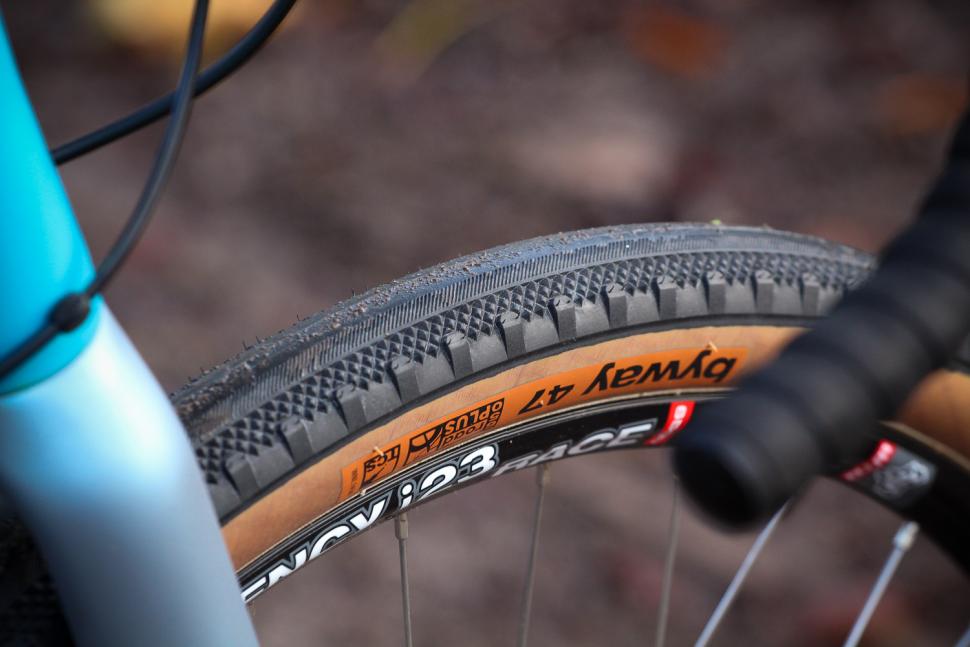
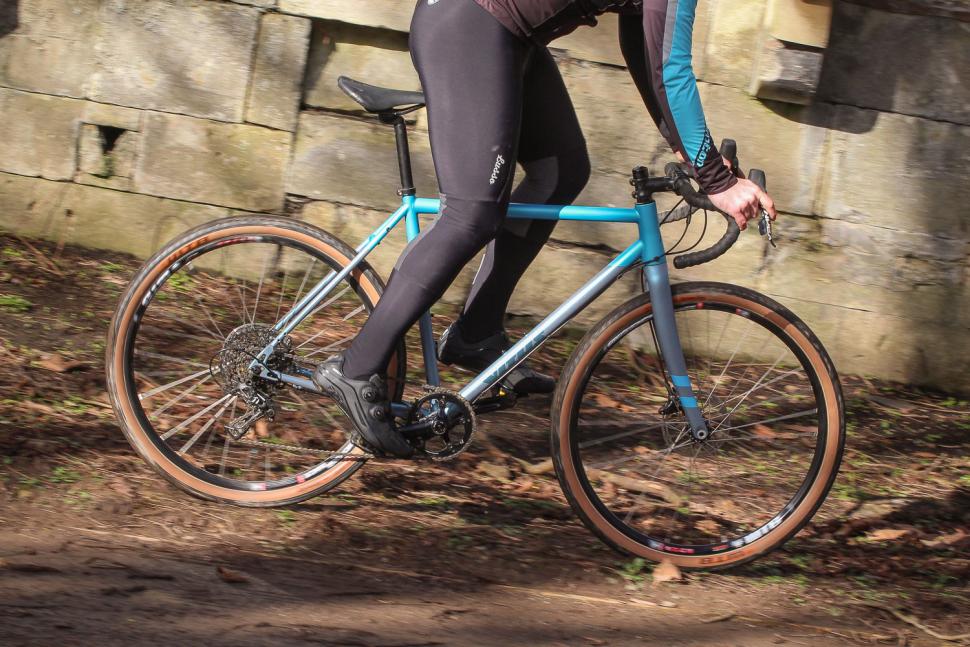

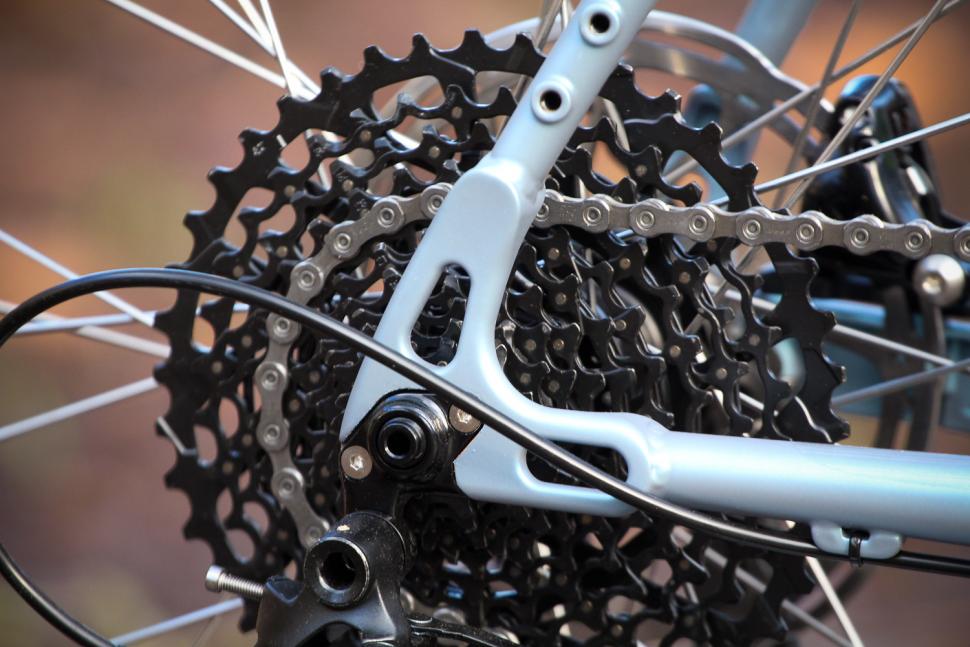

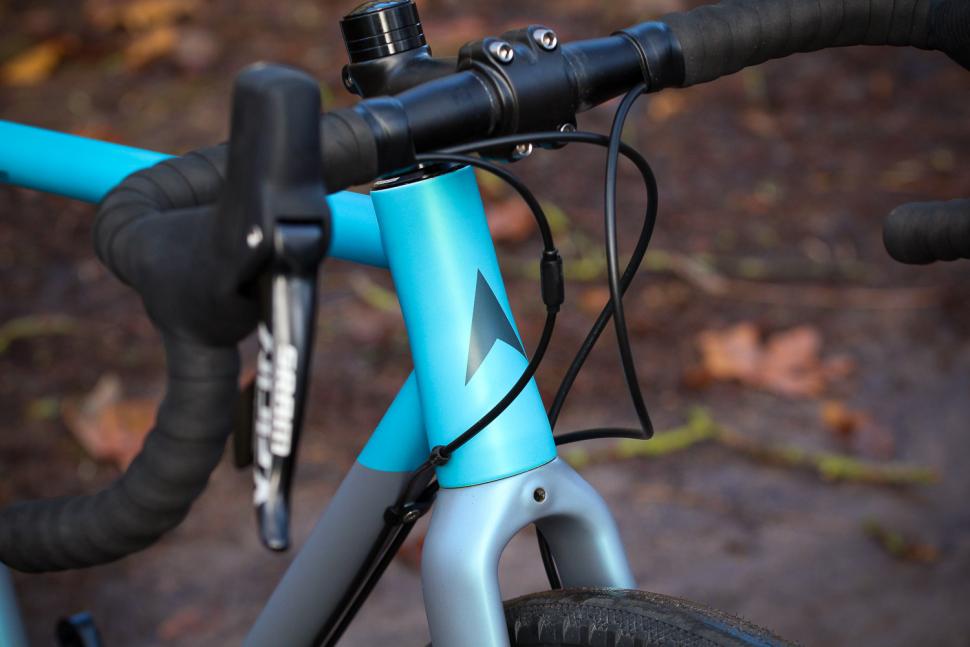


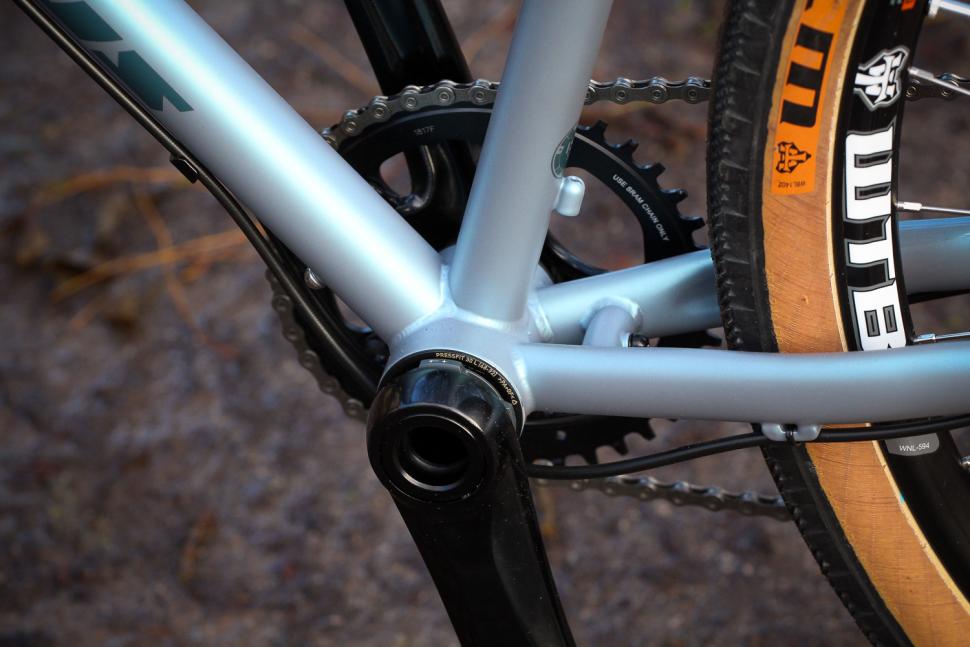



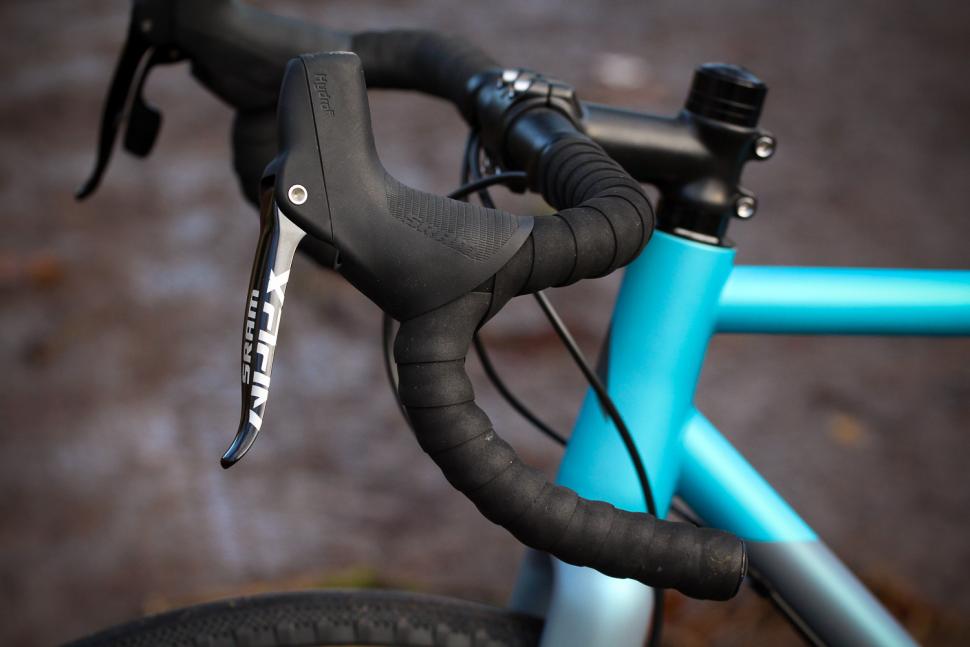
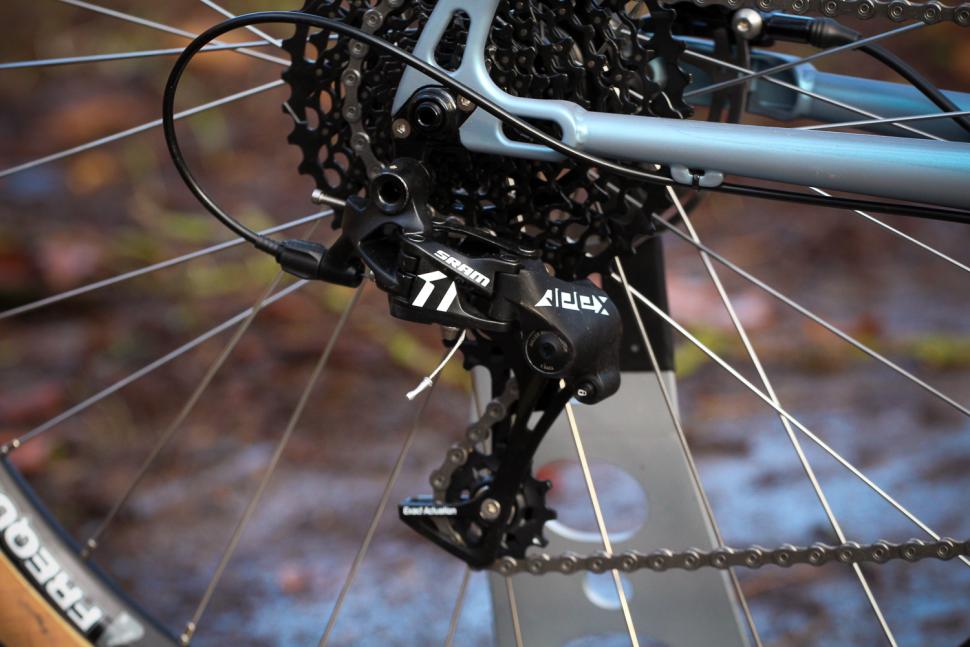
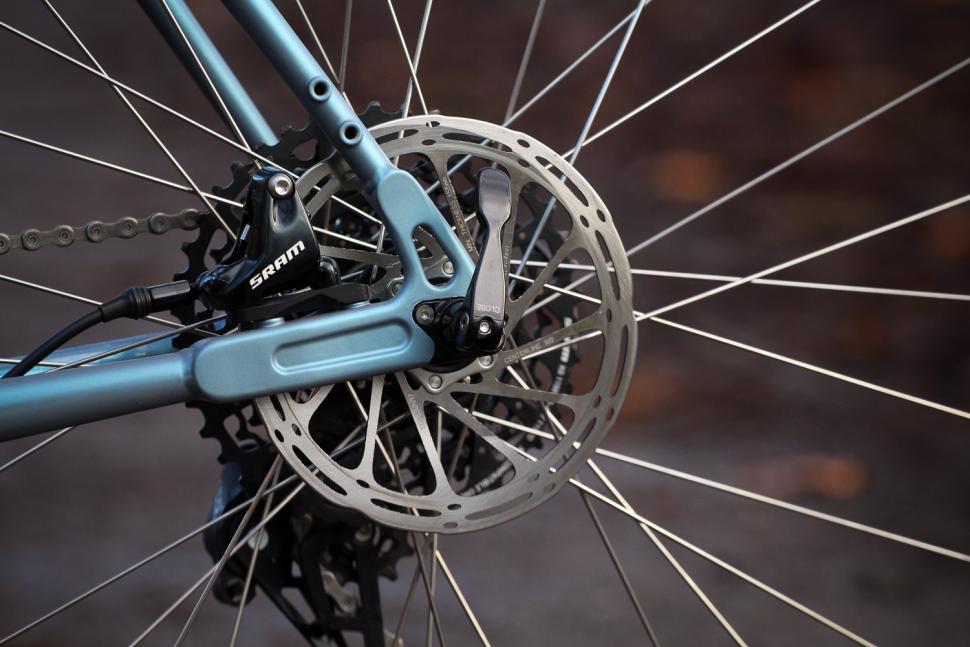
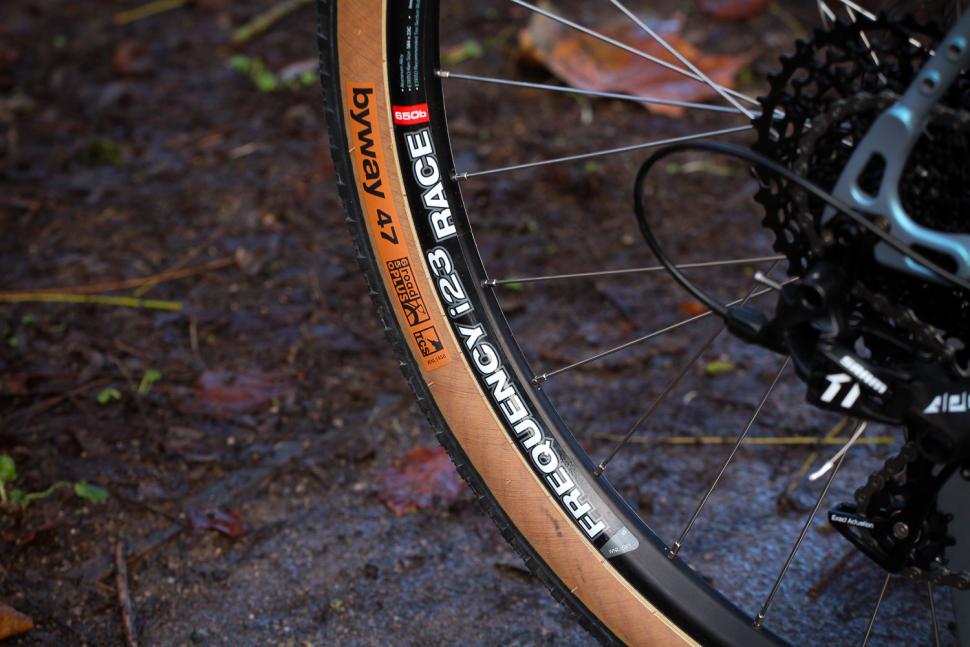

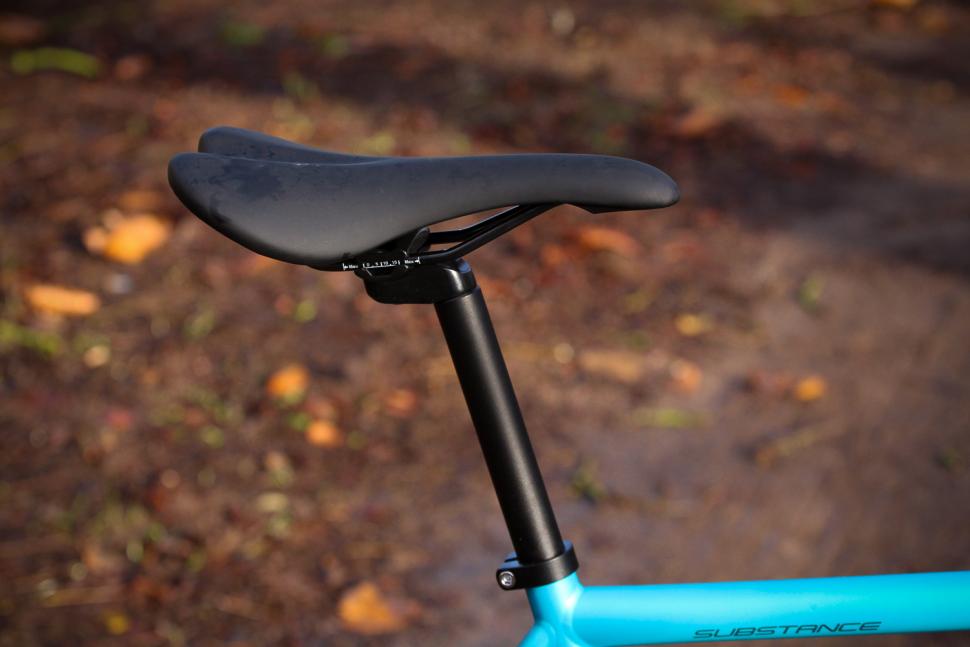
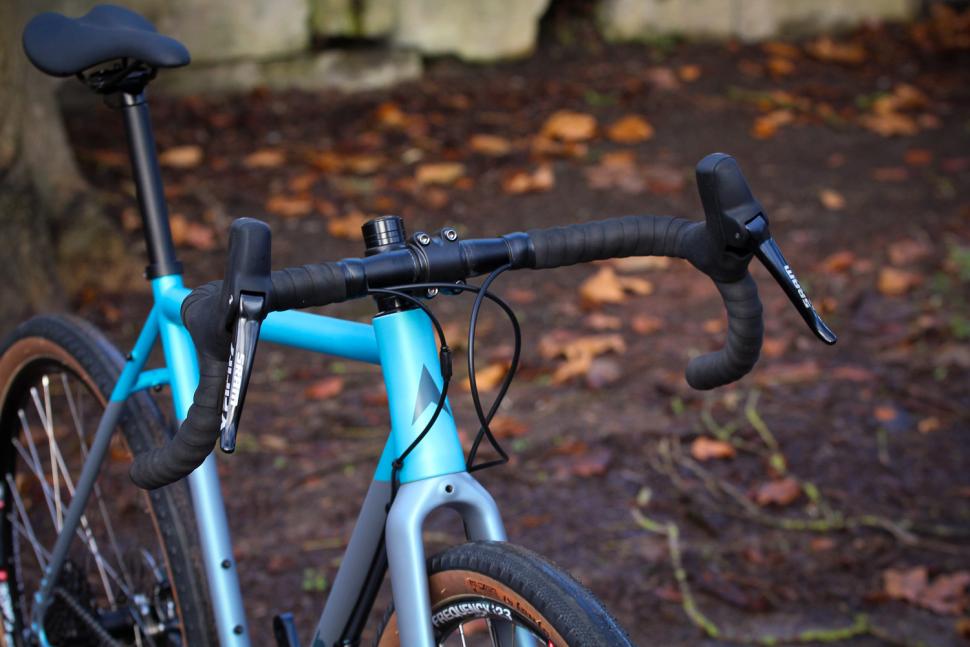



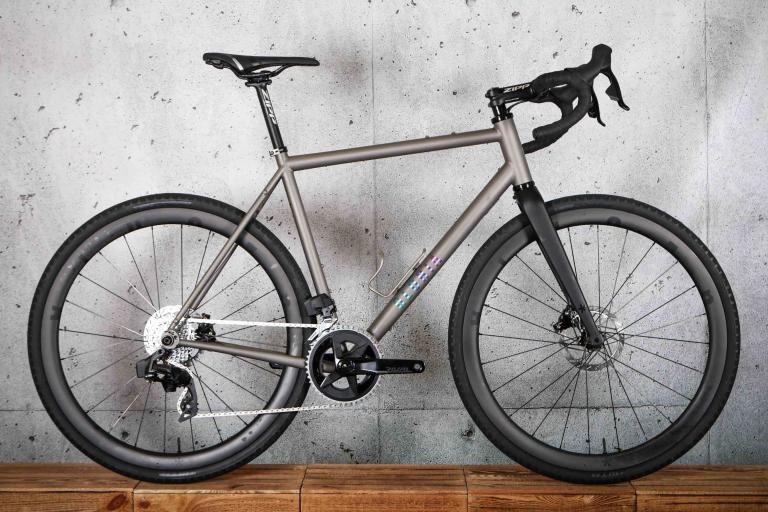
Add new comment
1 comments
beautifull, but we are sick of these curved forks of the past!! come on vitus, have you seen any bike with a carbon disk fork to have that curve down there???